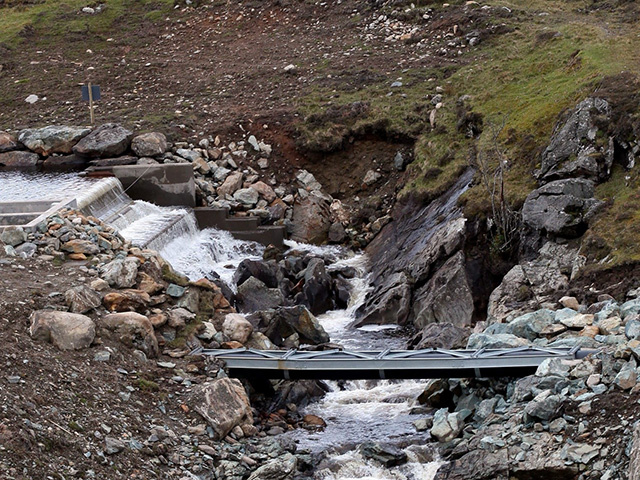
Whilst it was very encouraging to see the First Minister’s public support for hydro recently in relation to the proposal for increased pump storage at the massive Cruachan scheme, we would not want this focus on ‘big’ to overshadow the vast remaining untapped potential for further small and medium scale run of river schemes across Scotland.
Small hydro is something of a misnomer, gaining the title more because the Aswan Dam is big hydro than because the nature of the project is insignificant.
A typical 500kW development will take three years in planning and development with an overall budget in excess of £2 million. These are significant civil engineering projects and often a number of schemes may be grouped together in one glen.
The two great advantages of hydro as a source of renewable power are discreetness and longevity. Once the construction is completed, the visible elements are limited to an intake akin to a complicated weir and a turbine house typically the size of a double garage.
Both can be dressed to blend in with the surroundings and many turbine houses would be easily mistaken for an agricultural building. This certainly distinguishes hydro technology from the current debate regarding the acceptability or not of wind turbines within our landscape and the potential wilderness impact.
Typically hydro projects are evaluated over a lifespan of 50 years though the majority should still be operational well beyond the half century. Even with historic engineering and construction techniques, there are scores of old schemes operating across Scotland installed up to 100 years ago.
This longevity and low running costs mean that whilst the initial costs are high, the lifetime cost per kilowatt hour of electricity produced from hydro are amongst the lowest of all generation methods.
The introduction of the feed in tariff (FIT) in 2010 has certainly led to a significant acceleration in the development of projects up to 2MW, but the development timescales mean that many of the schemes incentivised through the FIT mechanism are only now in their construction or commissioning phases.
There is definitely a bottleneck of projects over the next two years and the limited availability of materials and experienced installers, particularly in civil construction, will only cause delays and increased costs. This is allied to the first degression of the feed in tariff arriving this April.
Whilst this has been limited to 5 per cent, further degression will occur next year and potentially even later this year. The underlying principle for the degression mechanism across all renewable technologies was that as installation increased the cost of the technology would decrease.
This has been well evidenced in photo-voltaic where the cost of a typical installation has halved since 2010 but is not true of hydro where the technology is well established and most of the cost lies in the supporting civil engineering works.
Maybe a degressing feed in tariff running for only 20 years is not the best mechanism to support the roll-out of hydro?
In comparison to other technologies, hydro also has a strong pedigree in recycling investment into the Scottish and UK economies. The bulk of the development cost lies in civil construction carried out by local firms. At odds with solar and wind, the technological element (the turbine and controls) which might be sourced anywhere in the world only make up a small proportion of the overall project cost.
Small scale hydro has taken great leaps forward in the past few years and whilst we may not be back to the glory years of the fifties and sixties, a solid industry has developed providing investment and jobs across Scotland primarily in the more rural areas.
So our message to Mr Salmond and to DECC is please keep on supporting hydro, both big and small.
Luke Milner is owner of Glen Hydro
